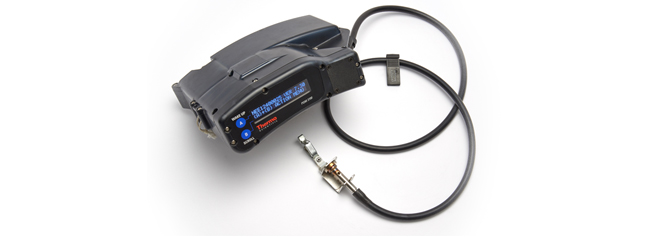The Respirable Personal Dust Monitor

The Respirable Personal Dust Monitor (PDM) TEOM Mass Based as a Compliance Monitor.
Any method of measurement and Standard must be relevant and conducive to best practice to serve the community, industry and government stakeholders. To this end and I quote from the Standards Australia website as to why Standards are developed; “To ensure they keep pace with new technologies, standards are regularly reviewed by Standards Australia technical committees.” This is one key criteria among other benefits. No Standard should hold back progress especially when it has the resultant ability to adversely effect human health. Coal mine dust exposure can lead to respirable disease including the commonly known Coal Workers’ Pneumoconiosis (CWP). Currently the AS2985 and manual gravimetric measurements provide exposure information a few days to a week or even longer after the event.
One Standard that needs to be reviewed and updated is the AS2985. Its very essence is to accurately measure respirable dust concentrations in the atmosphere based on the internationally accepted mass-based measurements.
The AS2985 standard requirements can be met by Personal Dust Monitors (PDM) that are continuous, filter based and with direct mass measurement. A gravimetric equivalent such as the TEOM microbalance mass measurement technique that typically provides a limit of detection on par with that of the most sensitive laboratory-based microbalances.
Similar, to the integrated Manual gravimetric sampling method, the PDM must contain a sampling system that collects particles on a filter located downstream of a respirable cyclone, preferably a Higgins Dewell (HD) type cyclone.
In contrast to the current manual personal method described in the AS2985, however, the PDM mass measurement is performed continuously during a working shift in a mine instead of being delayed by the days or weeks required for a laboratory analysis. The PDM is a continuous mass based respirable dust sampler and a gravimetric equivalent analysis instrument that is part of a belt-worn and a sampling inlet near the persons breathing zone.
In summary, a 2.2 litre per minute flow of particle-laden air from the work atmosphere enters the inlet and passes through conductive tubing before reaching the Higgins and Dewell (HD) cyclone at the entrance of the PDM. The sample stream with respirable particles that exits from the cyclone is then conditioned in a heated section of tubing to remove excess moisture. As the air stream subsequently passes through the mass sensor, an exchangeable filter cartridge collects the respirable particles which can be utilised for further analysis in a laboratory. The mass sensor can be removed from the PDM by a mine’s qualified dust technician who changes its particle collection filter and cleans the unit after the end of each work shift
Downstream of the mass sensor, the filtered air sample flows through an orifice used in conjunction with a differential pressure measurement to determine the volumetric flow rate. The system computer uses this information to maintain a constant volumetric sample flow by varying the speed of a DC pump. This ensures that the HD cyclone is kept at the correct flow rate required for the respirable cut point that follows the AS2985/ISO7708 respirable sampling efficiency curve, as currently followed by the Manual gravimetric sampling.
The TEOM microbalance approach uses first principles of physics to determine the mass change of the filter, is not subject to uncertainties related to particle size, colour, shape or composition. Built-in sample conditioning to remove excess moisture minimizes the PDM’s response to airborne water droplets. The PDM determines the mass concentration of respirable dust in the environment by dividing the mass collected on its filter over a given period of time, by the volume of the air sample that passed through the system during the same time frame, as in AS2985.
The PDM internally stores the tamper-proof data from its built-in environmental sensors and mass sensor for latter downloading and provides summary information on a continuous basis to the worker/miner through the display located on top of the battery case. The display continuously shows the latest values for the cumulative mass concentration, the current dust concentration, and the miner’s end-of-shift projected exposure. Through this interface, workers/miners can gauge their current dust exposure, as well as the effectiveness of actions taken to reduce the in-mine/workplace dust concentration.
The PDM requires Calibration of TEOM microbalance, flow rate, temperature and RH parameters at prescribed time periods including tilt test and leak checks as required by the manufacturer. The operator’s manual details what is required and when, as well as what a trained operator can test onsite and what needs to be done offsite for repair or yearly service and calibrations. All work to be carried out with NATA traceable calibration tools or those of the manufacturer where possible. This is consistent with the calibration requirements within the AS2985 and the USA Federal Register relating to 30 CFR Part 71 that covers both Manual Gravimetric respirable dust sampling and Continuous (PDM) monitoring with Direct Mass measurement instruments. The PDM3700 is the only real time monitor that meets the requirements of the USA MSHA dust rule and hence the only real time compliance monitor used within the USA.
Prepared by: Peter Phaedonos B.Sc. MRACI C Chem.
Lear Siegler Australasia Pty Ltd.
Posted in Uncategorized on Nov 12, 2020




